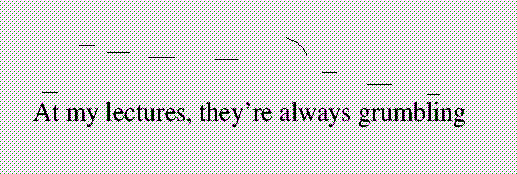Pitch refers to the perception
of relative frequency (e.g. perceptually high-pitched or low-pitched). Tone
refers to significant (i.e. meaningful, constrastive, phonemic)
constrasts between words signalled by pitch differences. Tone may be lexical,
as in Mandarin Chinese:
Or grammatical tone, as in many African languages, e.g. Edo:
| Tense | Monosyllabic verbs | Disyllabic verbs |
| Timeless | [ì mà] 'I show' | [ì hrùlɛ̀] 'I run' |
| Continuous | [í mà] 'I am showing' | [í hrùlɛ̀] 'I am running' |
| Past | [ì má] 'I showed' | [ì hrúlέ] 'I ran' |
However, there may also be non-pitch aspects of tone. Lexical tones are often related to durational, phonatory and vowel quality distinctions as well as frequency distinctions. For example, Mandarin Chinese tone 3 (low rise) is long with creaky voice, Hunanese tone 2 has breathy or chesty voice. Tibetan tone 1 words have voiceless initial consonants whereas tone 2 words have voiced beginnings. Long vowels in tone 4 or 5 open syllables in Thai are checked by a final glottal stop.
Intonation refers to the rise and fall of voice pitch over entire
phrases and sentences, even in non-tone languages, such as English:

For a video of how the larynx moves up and down with pitch, see also http://www.phon.ox.ac.uk/jcoleman/fallrise-loop.m4v